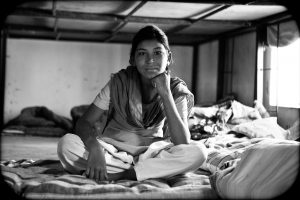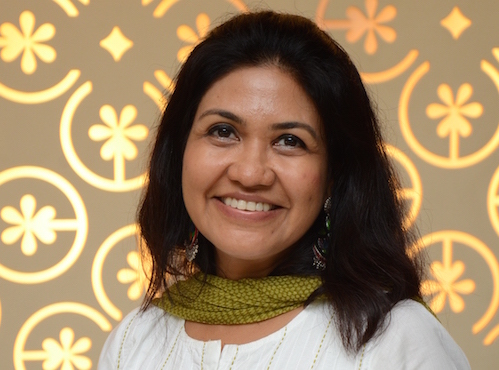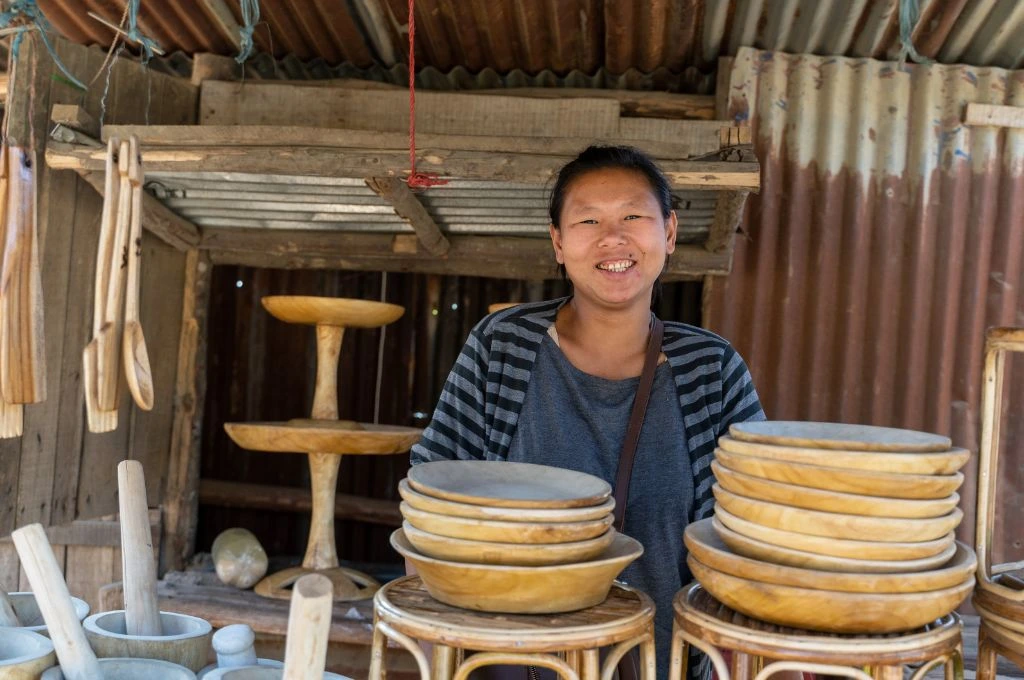It has been ten years since we, at EdelGive, set out on our philanthropic journey. Needless to say, we did not do it alone. Our nonprofit partners, funding partners, and colleagues at Edelweiss, all played a vital role in bringing us to this milestone. Here are some of the lessons we have learnt along the way.
1. Learning by doing: Building our mettle by making mistakes
EdelGive was incubated at Edelweiss, whose parentage and patronage steered our evolution as the philanthropic arm of the company. Even so, I am struck by how much we got wrong.
For one, I underestimated the skill and knowledge that goes into identifying ideal nonprofit partners. We applied investment banking due diligence checklists to social sector investments (I must admit to being an investment banker in the past); and we assumed that an MBA and a corporate background qualifies one to advise social sector leaders. We also naively equated poverty to economic deprivation alone, without delving deeper to understand the underlying threads of unequal opportunity and class, caste, and gender variables. These would have been grave mistakes, had it not been for the fact that we were willing to admit what we did not know, and were open to learning and experimenting along the way .
We naively equated poverty with economic deprivation alone, without delving deeper to understand the underlying threads.
I decided to have an early team comprised exclusively of young, social sector experts (I was the exception). In hindsight, building a balanced team with people from both sides of the spectrum and an in-built mechanism for the cross-pollination of ideas, outlook and cultures, is a better approach; one that we have now embraced fully.
In our quest for data and measurement, we realised that we had to learn about causality versus correlation, unintended consequences, and attribution errors. So, while we expect regular attendance to cause better learning in a school setting, the two are not strongly correlated. If we attribute correlation here, programmatic efforts will be focused on attendance and retention, and not on nurturing better teachers and better learning environments for children. As a result, we as funders may focus on funding the wrong programmes.
Similarly, Female Labour Participation Rates (FLPR) cannot be correlated only to economic progress, although it is an important factor. Research from the World Bank indicates that factors such as access to secondary and higher education, childcare, and measures to enhance women’s safety play a role increasing job opportunities for women in developing countries. Consequently, funders focused on employability, skilling, and the economic empowerment of women may need to fund multiple approaches.
We also learnt that while Randomised Controlled Trials (RCTs) are costly and time-consuming, they bring rigour, help us distinguish between causalities and correlations, minimise attribution errors, and hopefully identify positive and negative unintended consequences.
Finding the middle path to measurement, between anecdotal evidence or fragments of data on the one hand, and RCTs on the other, is an important one, for as philanthropists, we hesitate to fund surveys and longitudinal research.
2. Treading the middle path: Ask questions, many questions!
Sometimes, the middle path is simply combining standard output-oriented metrics with asking, ‘where the bullet holes aren’t.’ Abraham Wald, mathematician at Columbia University was a member of the War Department’s statistical research group during World War II. The challenge posed before the group was how to armour bombers so that they could better survive anti-aircraft fire and the attack of fighter planes.
The group reviewed a study showing the damage patterns of returning aircrafts and recommended adding armour to those areas that showed the most damage: the wings, fuselage and tail. Wald rejected this recommendation: if a plane could return with its wings shot up, that was not where the armour was needed. Wald advised that the group consider the larger data set of all planes, especially the ones that did not return. “The armour doesn’t go where the bullet holes are. It goes where the bullet holes aren’t”, he said. “On the engines”.
In asking where the ‘bullet holes aren’t’, we need to be cognisant of what Chimamanda Ngozi Adichie calls the ‘Danger of a Single Story‘.
“The single story creates stereotypes, and the problem with stereotypes is not that they are untrue, but that they are incomplete… The consequence of the single story is this: it robs people of dignity.”
The problem with stereotypes is not that they are untrue, but that they are incomplete.
Stories matter. Many stories matter. In our quest to understand the impact of our work, the challenge will be how to hear many stories, how to embrace doubt, how to be open and tolerant to voices and contexts different from ours, and how to not let our education and hubris get the better of us.
3. A sectoral focus
Our early areas of focus were education and livelihoods, which we chose intuitively. Being a corporate foundation and wanting to be closely tied with Edelweiss, we wanted thematic areas that would resonate with our Edelweiss colleagues. But we came across gender equality issues all the time. Girls not being able to continue their education, early marriage, early motherhood, continued involvement in unpaid household work, being paid unequally to their male peers at the workplace, being forced or led into occupations without any choice, being exposed early and continually to violence and abuse— all this smacked of deep-rooted biases and discrimination that a traditional approach to education and livelihoods could not address with any success.

Photo courtesy: Charlotte Anderson
So, six years after funding only education and livelihoods-related initiatives, we began developing a women’s empowerment portfolio. Our first partner was Mann Deshi Foundation; the route was economic empowerment through financial inclusion and supporting women’s entrepreneurship, a field we understood well as Edelweiss.
But persistently, the question of what we know as voice and agency kept coming up. And so we added CORO, Ibtada, and Majlis as partners, beginning our investments in social empowerment. These partnerships enable us to address the social and economic inequalities that confront women and girls more holistically.
4. The role of communities in building sustainable solutions
Several studies have shown that the involvement of communities is critical in ensuring improved service delivery and accountability of the public sector. We have experienced this in our watershed development programmes. When the community is involved from the very early stages in diagnosing problems and drafting a course of action, there is greater ownership of outcomes, and solutions become more sustainable.
When the community is involved from the very early stages, there is greater ownership of outcomes, and solutions become more sustainable.
Communities also contribute financially as well as through their labour, and engage actively with government bodies to ensure projects are completed on time. This ownership also helps in ensuring that assets thus created are maintained properly. Where community participation is high, nonprofits and experts are only needed as facilitators, and this works very well for funders who see greater impact for relatively smaller costs.
5. The value of systems thinking
The interplay of relationships among government, communities, businesses, civil society, the media, technology, the environment, and the legal system makes a single approach untenable. A systems approach however, looks at the entire social impact framework and its interdependent elements, and identifies opportunities that could deliver the most positive social outcomes.

A systems approach looks at the entire social impact framework and its interdependent elements | Photo courtesy: Pexels
We have made some initial steps towards adopting a systems-thinking approach in our work: the problems we face are messy and multi-faceted, so we seek to better understand the system and ask the right questions, while consciously focusing on specific challenges.
- Being open to knowing that we don’t know: We find partners who are good at identifying causes and dimensions of the problem; ideally by using data, being highly community-based and community-led, and being deeply committed to and invested in the communities they serve.
- Knowing that solutions may involve changes in beliefs, attitudes, or approaches: We recognise that solutions may be context-specific, and thus cannot be derived from generic ‘best practices’; they may therefore require experimentation and adaptation over time. Hence, we need to invest risk capital, have patience, move towards an advocacy and right-based approach, and also accept that measuring outcomes in the short-term may not be feasible.
- Finally, that we need multiple stakeholders to diagnose the problem: The solutions will have to be driven by the affected stakeholders; ‘adversaries’ like patriarchal communities are also stakeholders. Solutions will be required across organisational and systems boundaries–across societal, political, market, governance, and ecological systems. And into the personal, social, political, and economic spheres of our communities.
6. Collaboration
As we grew our work in education, livelihoods and women’s empowerment, we repeatedly heard our peers complain about the lack of collaboration in the sector. Their indignation was understandable, as philanthropy, especially, is expected to be free of the constraints that we see in the corporate world: competition, egos, unbridled growth, and a strong, ‘what-is-in-it-for-me?’ mindset.
‘Adversaries’ like patriarchal communities are also stakeholders.
I think we should all shed this notion of nobility. Collaboration is very difficult even in the corporate world, and even among businesses within the same corporation, where one would assume that there is greater commonality of objectives.
If private philanthropy is to make a dent in solving the many challenges that lie before us, it needs significant but intelligent financial and intellectual investment over a prolonged period. We need patience, collaboration and risk-taking, traits that are unfortunately uncommon in philanthropy today.
Our journey over the last decade has taught us that only partnerships and collaborations can multiply outcomes. As we enter the next decade, collaboration continues to be core to our intent and intervention and I am confident that this will take us closer to our vision of building a strong, efficient and high-impact social sector for a better India.





